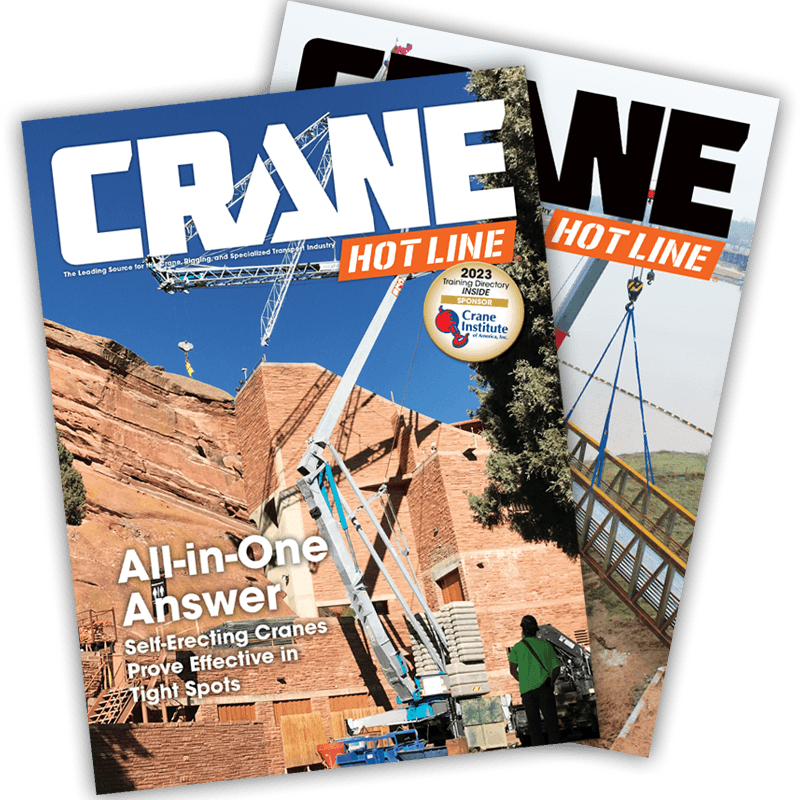NALE Delivers First Effer 2200 to North America
 |
| Enlarge Image Effer 2200 |
August 3, 2010 — North American Lifting Equipment, (NALE) Akron, Ohio, the sole Effer USA import distributor, continues to expand on its specialization in utility contractor and crane-for-hire markets. Effer’s range of cranes, up to 300 tonne/meter, compliments its specialized strategy particularly with the growing crane for hire sector and, accordingly, NALE is excited to announce the delivery of the very first Effer 2200 in the US and Canada into Manhattan, N.Y. The Effer 2200 is the largest production truck-mounted crane in the world in reach and moment standards, according to NALE.
Its performance factors of maximum reach, maximum flexibility and minimum footprint were key factors in its being chosen for the work in Manhattan. Additionally, the crane’s ability to move into the job site quickly, set up and perform efficiently in congested New York streets with minimum disruption to the flow of traffic sealed the decision to make it the crane of choice for its new owners.
"Typical crane-for-hire users may find a particular advantage to owning a large articulating crane in their fleet,” says Tim Smith, NALE president. “No other conventional crane can offer the broad versatility of a large crane like the 2200. Specifically, the 2200 can be equipped with a removable fly jib allowing unlimited live luffing angles to reach up and over objects and obstacles, with a very limited footprint. In addition, the fly jib can be removed allowing essentially a new crane configuration for heavy lifts inside plants and other limited height areas. We believe this crane for hire market segment will continue to grow as users realize the true economic benefit of the crane’s unique performance capabilities and return on investment.”
Leitner also mentioned that the low noise level of the crane is another advantage. The dual variable displacement pumps can keep the crane running at full capacity with only 1100 engine rpm, while a conventional telescopic crane might need 2000 or more rpm for maximum capacity and speed performance. This lower running speed saves fuel and means less noise pollution on the job site which creates a safer and healthier work area.
![]()
The basic model 2200/L-6S has a 62,162-pound capacity at 12’5”, and 9,360 pounds @ 87'9". Its maximum vertical reach is 101 feet. With fly-jib in level-luff position, at a height of 101 feet, the cranes’ capacities are 15,837 pounds at 40'9" side reach; 6,283 pounds at 60'5" side reach; and 3,637 pounds at 80' side reach. The 2200’s maximum vertical height with jib is 147 feet.
The crane features continuous rotation by double race bearing and with two planetary drives. It is equipped with load sensing control valves with two variable displacement piston pumps, and an electric-hydraulic load moment limiting device. It has rotation stops to prevent the boom from rotating over the front of truck, and single-stage, double-acting cylinders with pilot operated holding/counter balance valves.
Two sets of stabilizers with triple beams extend perpendicular from the center line of truck. The crane is equipped with a hydraulic swing-up device for the stabilizer legs. An additional stabilizer beam, with two legs extending 5 feet to the rear of the truck, is also standard. The 2200 features Effer’s stabilizing monitoring system, with “short jacking” capabilities; a custom designed subframe; two oil coolers; centralized greasing manifold; and radio remote controls.
Pinchas Leitner of Manhattan-based Lifting Solutions bought the Effer 2200 with its fully customized Western Star truck chassis because he saw unique opportunities for the crane package that would increase his exposure and expand his client base in the greater New York City area. And according to Leitner, the Effer 2200 has done just that. In a recent interview, Leitner explained that the crane has helped him get jobs in the public sector for such entities as public schools and low-income public housing. Because the crane can move in and out quickly, he is able to do the work during weekday hours when normal labor rates apply instead of weekend hours when double and triple overtime rates would apply for the public sector workers. This reduces the cost to his clients who are dealing with tight budgets.


